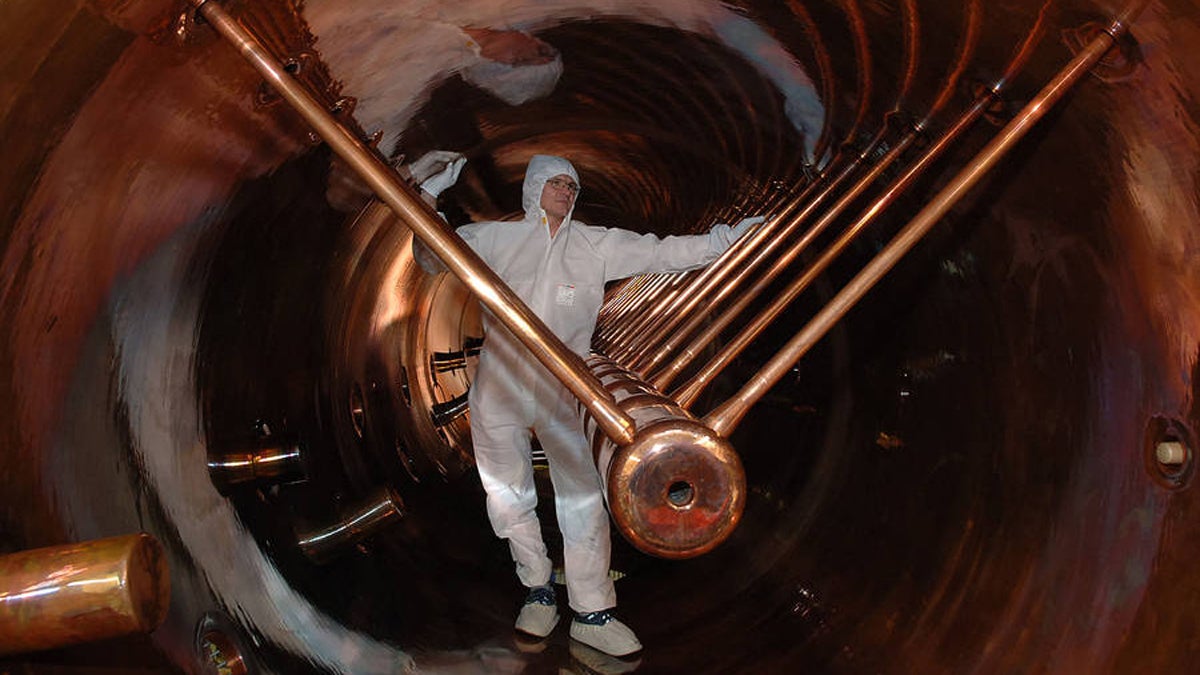Element 117: A step closer to the mythical ‘Island of Stability’
Listen
A view into the 120-meter long linear accelerator at GSI Helmholtz Center for Heavy Ion Research in Germany
Physicists create a new superheavy element with some enlightening side effects.
Physicists recently used a particle accelerator to slam calcium and berkelium nuclei together to create a new “superheavy” element with 117 protons in its nucleus called Ununseptium. The union was detailed in a scientific paper published in the journal Physical Review Letters.
Though Ununseptium lasted only a fraction of a second before decaying into other elements, its brief creation is considered a pretty big deal by the physics community for a couple of reasons.
First, because this was the second time “Element 117” was created—the first time was by a joint collaboration between Russian and American teams—it’s now eligible to be added to the official periodic table. Whether or not it makes it will be decided by officials at the International Union of Pure and Applied Chemistry, but if it does pass muster, it will be renamed by the first team to have seen it and take it’s place next to Ununoctium, which, with 118 protons in its nucleus, was the heaviest element ever created.
But that’s not really why the creation of Element 117 was a big deal. The reason scientists are excited has to do with a little known concept known as the “Island of Stability.” Because protons repel each other, heavy elements (meaning ones with the highest numbers of protons in their nuclei) are naturally unstable and decay quickly. But physicists have hypothesized that a “magic” number of protons may create a stable superheavy element. No one knows if that theory holds water, nor do they know what the magic number is, but the rate at which Element 117 decayed, made physicists think they may be glancing at the edge of the “Island of Stability.”
“When element 117 decays, it breaks down into smaller elements, and one of them was called Lawrencium,” explains Scientific American associate editor Clara Moskowitz who wrote about the discovery for ScientificAmerican.com. “It has 103 protons in its nucleus. But they saw a version of Lawrencium that’s never ever been seen. This version had a half-life of 11 hours, which is an incredibly long time for these heavy elements. And the fact that it lasted so long suggests to the scientists that they may be getting close to the Island of Stability.”
WHYY is your source for fact-based, in-depth journalism and information. As a nonprofit organization, we rely on financial support from readers like you. Please give today.



